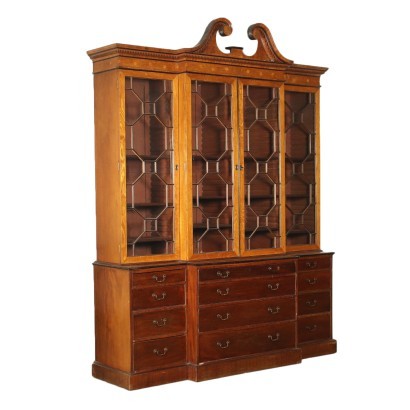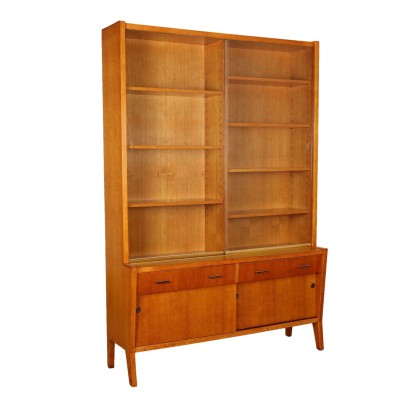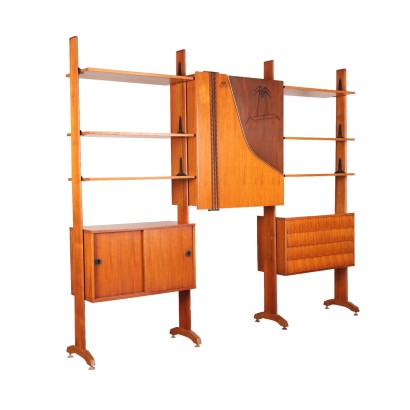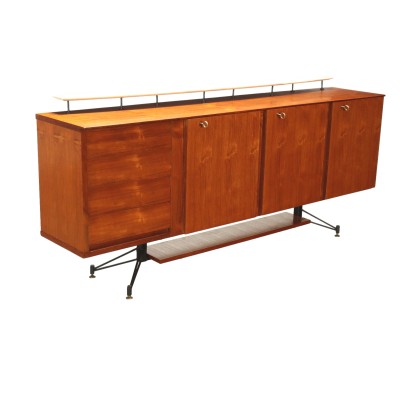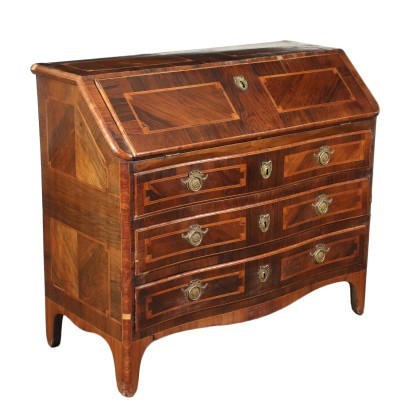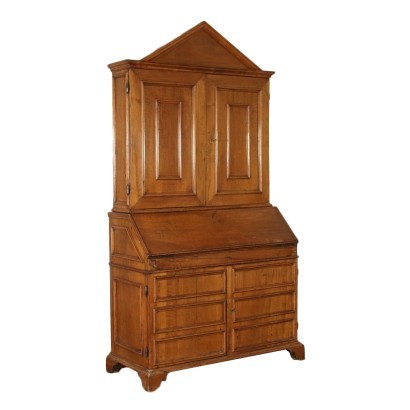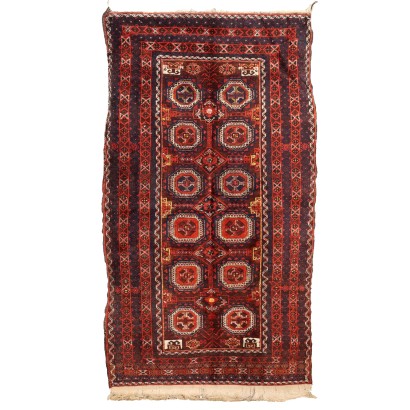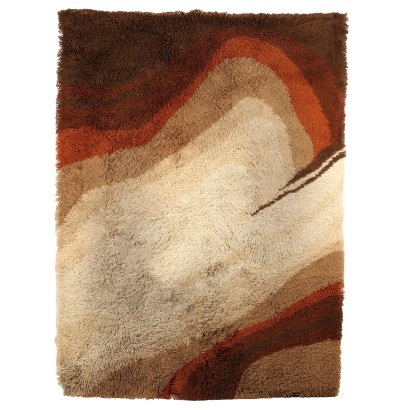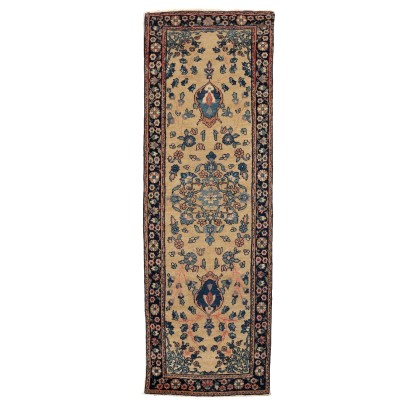English Bookcase In The Style of George III Mahognay 19th Century - George III Breakfront Bookcase
Features
George III Breakfront Bookcase
Style: George III Revival
Age: 19th Century / 1801 - 1900
Origin: England
Main essence: Silver Fir , Satinwood , Mahogany , Oak
Material: Glass
Description
English bookcase in the George III style with a split front, the lower part has drawers, while the upper part has four doors with glass panes punctuated by geometric wooden motifs (one of the panes is broken). The cornice is inlaid with leaf and floral motifs in stained wood. Citronnier and mahogany, the interiors are in oak and fir.
Product Condition:
Product that due to age and wear requires restoration and resumption of polishing.
Dimensions (cm):
Height: 264
Width: 207
Depth: 55
Additional Information
Style: George III Revival
Ripresa stilistica del 900, delle forme proprie dello stile Giorgio III (1750-1810)
Age: 19th Century / 1801 - 1900
19th Century / 1801 - 1900 Main essence:
Silver Fir
Soft coniferous wood, used for rustic furniture or to build the chest, that is the structure, of furniture then veneered in more precious woods. It has been used since ancient times, its most valuable use is, in the Spruce variant, in the inlays of French antique furniture of the '700 . The spruce, more typical of northern Europe, in Italy grows mainly in the Eastern Alps at altitudes above 1300 m. The noblest use of this essence was in the construction of violins, guitars and cellos: Stradivari himself produced his famous violins with this wood.
Satinwood
The name is common in France for citrus limonum , the fruit tree of the lemon. From this plant a light, solid and fragrant wood is obtained, used in the construction of furniture especially in England and France, where it was appreciated for its resistance.
Mahogany
It is one of the most precious and sought-after woods in cabinet making. It was discovered in Central America around 1600 and began to be imported to England in the 1700s. Much appreciated for its hardness and indestructibility, it became widespread following the blocking of walnut exports from France in 1720 and the consequent elimination of English import duties on mahogany from the colonies in America and India. The most valuable version comes from Cuba, but it became very expensive. At the end of the 18th century it began to be used also in France in Louis XVI, Directory and Empire furniture, its diffusion declined starting from when Napoleon, in 1810, forbade its import. It was generally used in the manufacture of elegant furniture, due to its characteristics and beautiful grain.
Oak
Under the name of oak or oak various types of woods derived from plants of the genus quercus are grouped. They are always resistant, hard and compact woods. Oak is lighter than oak, both are used for more rustic furniture or for the interiors of French and English antique furniture. In other processes it was gradually replaced by the advent of exotic woods considered more valuable since the 18th century.
Material: Glass
Other customers have searched:



